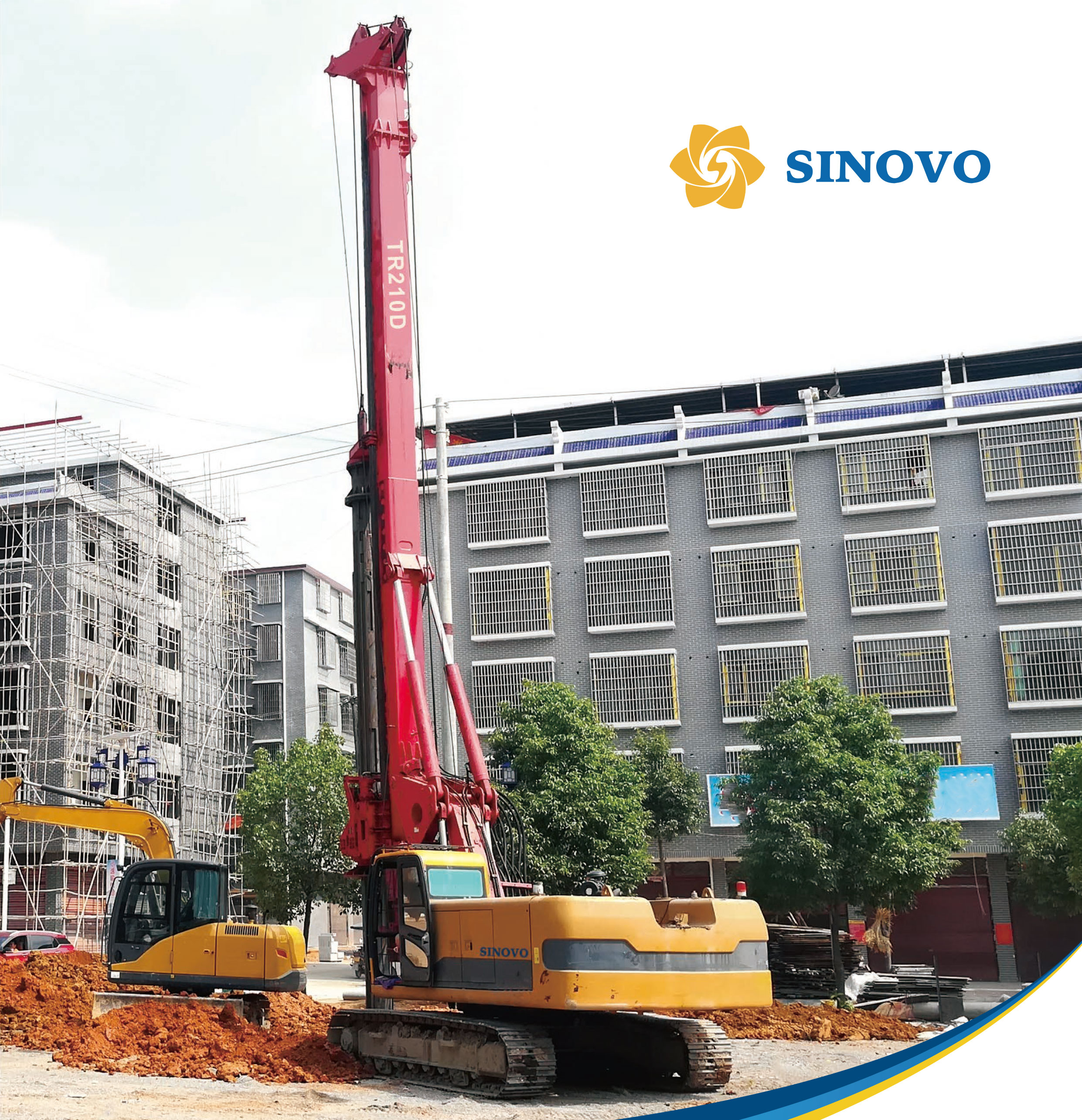1. Preface
Rotary drilling rig is a construction machinery suitable for drilling operations in building foundation engineering. In recent years, it has become the main force in pile foundation construction in bridge construction in China. With different drilling tools, rotary drilling rig is suitable for drilling operations in dry (short spiral), wet (rotary bucket) and rock layers (core drill). It has the characteristics of high installed power, high output torque, large axial pressure, flexible maneuverability, high construction efficiency and multifunctionality. The rated power of rotary drilling rig is generally 125-450kW, the power output torque is 120-400kN • m, the maximum hole diameter can reach 1.5-4m, and the maximum hole depth is 60-90m, which can meet the requirements of various large-scale foundation construction.
In bridge construction in geologically hard areas, the commonly used pile foundation construction methods are manual excavation pile method and impact drilling method. The manual excavation method is gradually being phased out due to the long construction period of pile foundations, outdated technology, and the need for blasting operations, which pose significant risks and hazards; There are also certain problems with using impact drills for construction, mainly manifested in the extremely slow drilling speed of impact drills in geologically hard rock layers, and even the phenomenon of no drilling throughout the day. If the geological karst is well-developed, drilling jamming often occurs. Once drilling jamming occurs, the construction of a drilled pile often takes 1-3 months, or even longer. The use of rotary drilling rigs for pile foundation construction not only significantly improves construction speed and reduces construction costs, but also demonstrates obvious superiority in construction quality.
2. Characteristics of construction methods
2.1 Fast pore forming speed
The tooth arrangement and structure of the rock core drill bit of the rotary drilling rig are designed based on the theory of rock fragmentation. It can directly drill into the rock layer, resulting in a fast drilling speed and greatly improved construction efficiency.
2.2 Outstanding advantages in quality control
Rotary drilling rigs are generally equipped with a hole casing of about 2 meters (which can be extended if the backfill soil at the hole is thick), and the rig itself can embed the casing, which can minimize the impact of backfill soil at the hole on the drilled pile; The rotary drilling rig adopts a mature underwater conduit pouring concrete pile pouring process, which can avoid the adverse effects of mud falling from the hole and sediment generated during the pouring process; Rotary drilling rig is a pile foundation construction machinery that integrates modern advanced science and technology. During the drilling process, it has high accuracy in verticality, rock layer inspection at the bottom of the hole, and pile length control. At the same time, due to the small amount of sediment at the bottom of the hole, it is easy to clean the hole, so the quality of pile foundation construction is fully guaranteed.
2.3 Strong adaptability to geological formations
The rotary drilling rig is equipped with different drill bits, which can be used for different geological conditions such as sand layers, soil layers, gravel, rock layers, etc., without geographical limitations.
2.4 Convenient mobility and strong maneuverability
The chassis of the rotary drilling rig adopts a crawler excavator chassis, which can walk on its own. In addition, rotary drilling rigs can operate independently, have strong mobility, adapt to complex terrain, and do not require auxiliary facilities for installation and disassembly. They occupy small space and can be operated against walls.
2.5 Environmental protection and cleanliness of construction site
The rotary drilling rig can operate in rock formations without mud, which not only reduces the waste of water resources but also avoids the pollution of the surrounding environment caused by mud. Therefore, the construction site of the rotary drilling rig is clean and causes minimal pollution to the environment.
3. Scope of application
This construction method is mainly suitable for drilling piles with rotary drilling machines in moderately and weakly weathered rock formations with relatively hard rock quality.
4. Process principle
4.1 Design Principles
Based on the working principle of rotary drilling rig drilling, combined with the mechanical properties of rocks and the basic theory of rock fragmentation by rotary drilling rig, test piles were drilled in moderately weathered limestone formations with relatively hard rock. The relevant technical parameters and economic indicators of different drilling processes used by rotary drilling rig were statistically analyzed. Through systematic technical and economic comparison and analysis, the construction method of rotary drilling rig drilling piles in moderately weathered limestone formations with relatively hard rock was finally determined.
4.2 Principle of drilling technology for rotary drilling rig in rock formations
By equipping the rotary drilling rig with different types of drill bits to perform graded hole enlargement on hard rock formations, a free surface at the bottom of the hole is constructed for the rotary drilling rig drill bit, improving the rock penetration ability of the rotary drilling rig and ultimately achieving efficient rock penetration while saving construction costs.
Post time: Oct-12-2024


